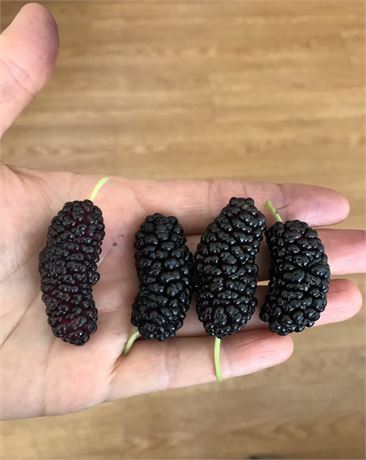Mulberry trees in the Yard
Published 9:27 am Friday, June 19, 2020
|
Getting your Trinity Audio player ready...
|
by Max Phelps
Yards to Paradise
More common than you may imagine, mulberries and the month of June go together. The birds definitely love the fruits. (I’ve picked a few from at least three of my customers yards lately.) Everybody who has tried them seems to like mulberries. But not everybody wants a tree in the yard.
Convention says they are a messy tree, with fruit on the sidewalk and bird poop on the automobile.
While there is a degree of truth to those perceived problems with having a mulberry tree, have you ever considered it may not be all bad? And, what tree doesn’t have some negatives to go with the positives? Take maple trees: most produce seeds that fly around in late spring like hundreds of toy helicopters, and the ones that don’t produce so much pollen no wonder allergies are worse than they were a generation or two ago. Bradford pear trees may look shapely, and the blooms are pretty, but they are short-lived and fare poorly in wind or ice storms. So, a mulberry isn’t the only tree with a few negatives.
Let’s take another look and investigate some potentially good things about the mulberry tree. It’s not apt to blow over in a windstorm. It is not likely to need spraying for bugs, beetles or bagworms. It has big attractive leaves, similar to a basswood or catalpa. While it’s blooms are inconspicuous, the fruits are loved by birds, squirrels, and just about any other critters who can get to them before they are gone. A carefree tree, the mulberry may not even be noticed except when it has ripe fruit.
About those fruits: they are delicious! I know I love a handful of ripe mulberries. And, birds love them so much that they tend to leave cherries, and blueberries and gooseberries alone until all the mulberries are consumed first. Consider the mulberry tree as your decoy so that you get a chance to harvest your other fruits, even if you don’t buy netting and cover them.
There are native mulberries, this works for those folks who like natives in their yards. (Believe me, Bradford pears are not native.) And there are Russian, Chinese, Pakistani, Iranian and other mulberries if you want to investigate and place an order with some nursery specializing in fruiting exotics. There are even white-fruiting mulberries for those worried about purple stains on their white car hood. (I’ve not eaten any white ones but am told they are very good also.)
Also, mulberries have so many small seeds, sort of like blackberries do, that they get distributed about the neighborhood by the wildlife, just like hollies, walnuts and any other tree with seeds and fruits. From seed to a small tree in three to five years, seedling mulberries will do well if you find one and just let it grow.
For those who want to grow mulberries for their delicious fruits, (or even for raising silkworms if you’re so inclined), a good fruit or orchard catalog will offer several options. I am thinking Raintree Nursery in Washington state. But I’ll bet you will find more online or when the garden catalogs hit your mailbox next winter.
Mulberries could be used more often in landscapes in my view. Just maybe I’ve given the idea to someone who will plant a mulberry tree…or let a wild one grow that the birds may have planted.
For more information, visit www.rockcastles.net




